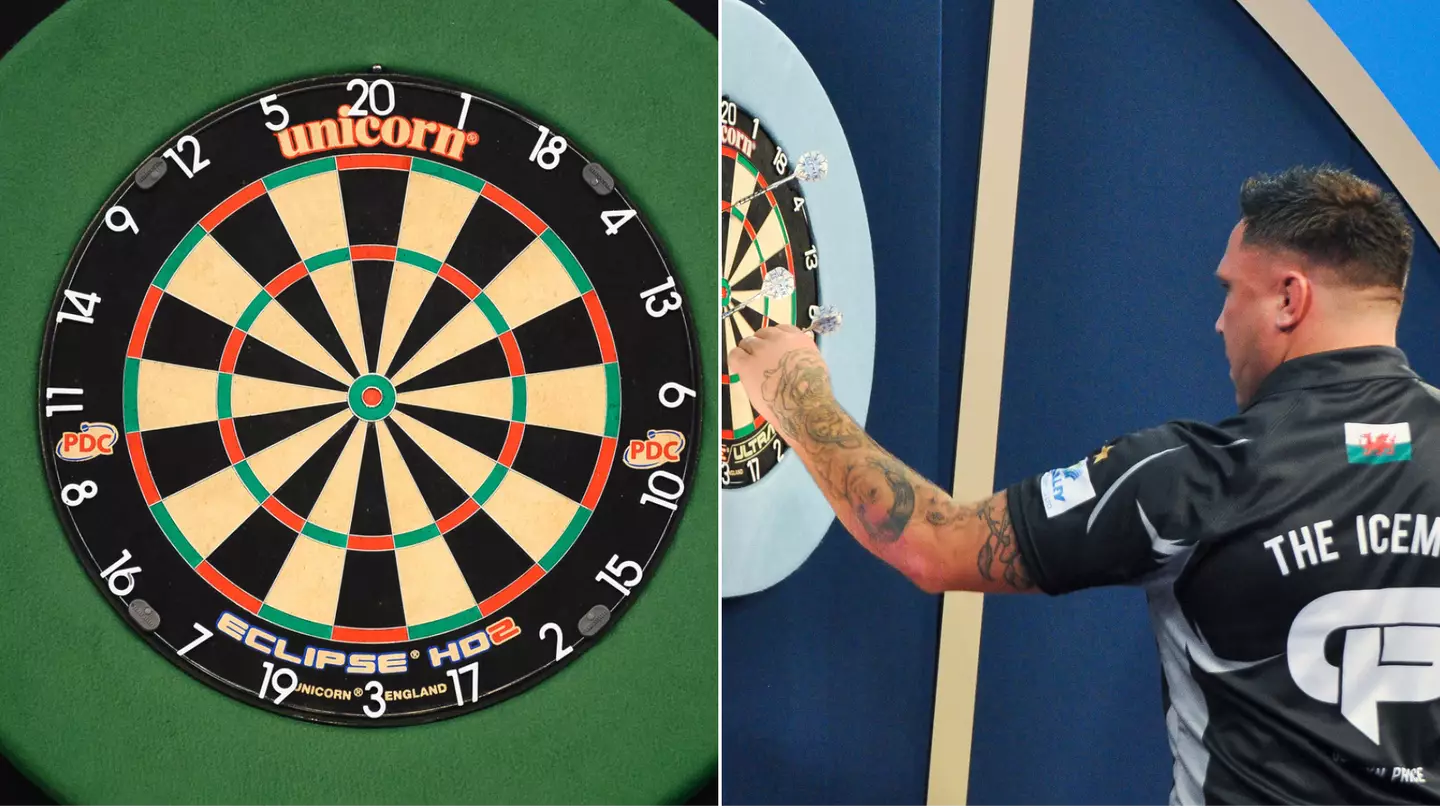
Some fans have often wondered why dartboards have all 20 numbers positioned in an unusual pattern - but why are the numbers arranged in such a way?
On a standard dartboard, the single number 20, treble and double will all feature in the centre-most part of the board, with the bullseye and outer bull area sitting slightly below it.
If you miss the treble 20, you're likely to slip into the five or the one, while missing the treble 19 below it runs the risk of dropping into the three or seven.
Advert
If you take a second to look at the board as a whole, the order of the numbers - put simply - doesn't really make any logical sense. Odd and even numbers aren't different colours and there isn't any sequence involved.
The real reason behind the allocation of numbers is complex - but certainly an interesting one.
The person responsible for the current numbering is widely credited to be Brian Gamlin, a carpenter who lived in Lancashire, in 1896 - although it has previously been disputed as to who actually designed it.
Advert
According to DartHelp.com, there was a fierce argument at the time surrounding whether darts was a game based on chance, or a game based on skill. Given the gambling laws of the time, darts needed to cement itself on one side of the divide.
DartHelp add that there are an astonishing 2.43 quintillion ways to arrange all 20 numbers on a dartboard, with Gamlin's design aiming to essentially even out the probability of any one number being singled out, or hit.
The idea, therefore, was to make darts the ultimate test of skill - and anyone who has picked up a dart knows how much practice it takes to precisely navigate your way across the board.
You will also have spotted how high numbers are often between much smaller numbers, i.e.: the treble 18 being between a one and four.
Advert
It is claimed that this was another design aim from Gamlin in order to increase the margin of error for competitors when it comes to aiming for a big number.
Topics: Darts